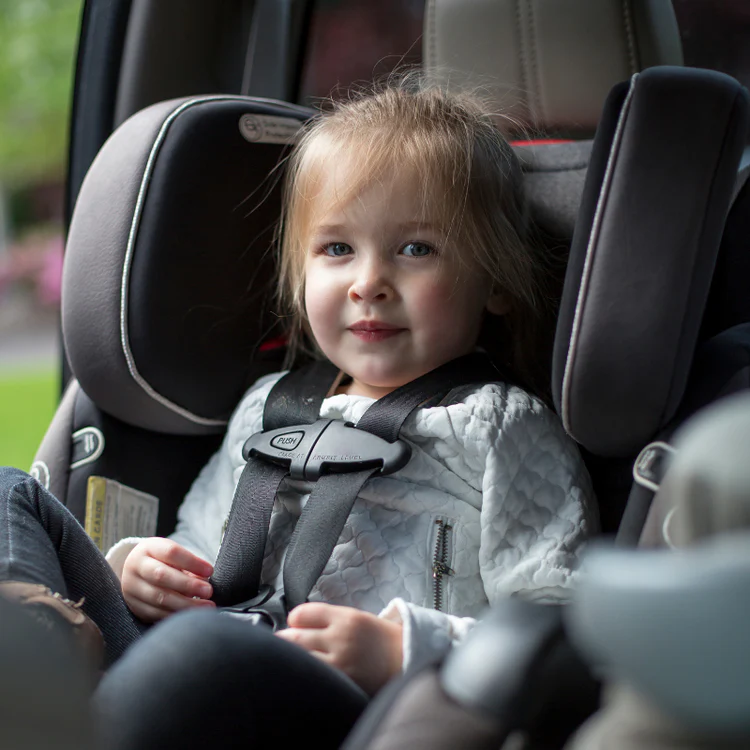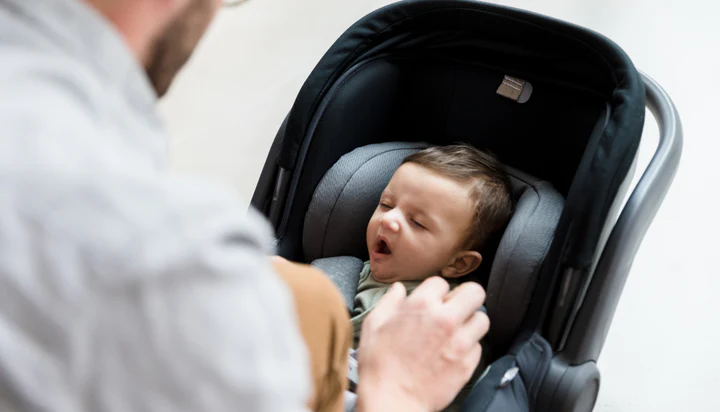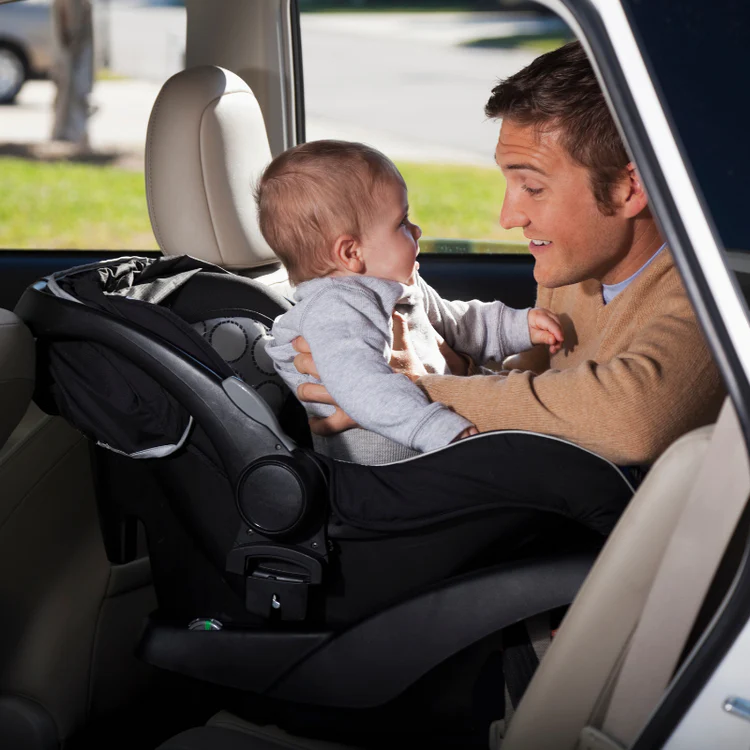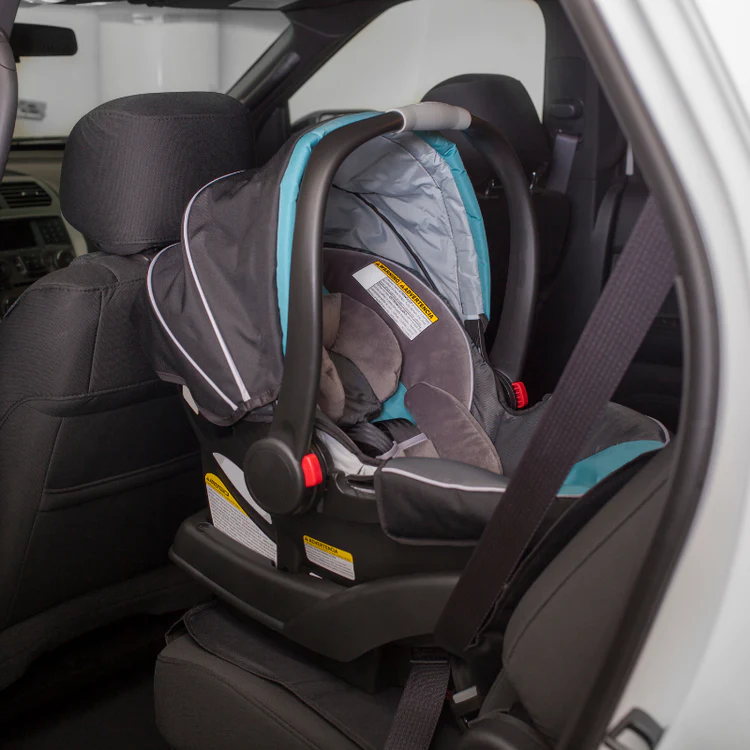Child Car Seat Buyer’s Guide: Ensuring Safety on the Road 2K Shares Child Car Seat Buyer’s Guide: Ensuring Safety on the Road Meta Description: Download our FREE Child Car Seat Buyer’s Guide to make informed decisions and keep your little ones safe and secure during every ride. Safety First, Every Ride, Every Time! Introduction: As a parent, your child’s safety takes precedence, especially when traveling by car. That’s why we’ve meticulously crafted an indispensable Child Car Seat Buyer’s Guide with you in mind. Why You Need This Guide? 👶 Prioritize Your Child’s Safety: Child car seats are more than accessories; they are essential safeguards during every journey. Learn how they play a pivotal role in ensuring your child’s safety. 📋 Guide’s Purpose: Gain a crystal-clear understanding of how this guide empowers you with knowledge on selecting, using, and maintaining the right car seat tailored to your child’s unique needs. Explore the World of Car Seats: 👶 Types of Car Seats: Discover the diverse range of car seats, from rear-facing infant seats to booster seats, and find the perfect fit for your child’s age and requirements. 📏 Understanding Measurements: Get expert guidance on measuring your child’s height, weight, and age to determine the ideal car seat size and type. 🛡️ Safety Standards and Certifications: Uncover crucial safety standards and certifications to look for when purchasing a car seat, ensuring it meets the highest safety benchmarks. 🚗 Choosing the Right Car Seat: Navigate the decision-making process with ease. Consider factors like your child’s age, weight, vehicle compatibility, ease of installation, harness systems, and additional safety features. 🔒 Installation and Usage: Master the art of correctly installing and securing your car seat in your vehicle, including latch systems, seat belt installation, and tether anchors. 🧼 Maintenance and Cleaning: Learn indispensable tips for maintaining and cleaning your car seat, enhancing its longevity and hygiene for your child’s well-being. 🎁 Additional Features and Accessories: Explore optional features and accessories designed to enhance the convenience and comfort of your car seat. ❓ FAQs: Find answers to frequently asked questions regarding child car seats. Address concerns about installation, safety, usage, and maintenance with confidence. 🌐 Resources and References: Access a curated list of additional resources, including websites, videos, and organizations, offering further insights into child car seat safety, installation assistance, and local inspection locations. Your child’s safety during travel is non-negotiable. With our Child Car Seat Buyer’s Guide, you gain access to the knowledge and resources necessary for informed decisions, ensuring your little one’s safety on the road. Download your FREE ENGLISH OR FRENCH copy today and embark on a journey of safety, comfort, and peace of mind with your child by your side. Together, let’s prioritize safety, because it’s Safety First, Every Ride, Every Time! FRENCH VERSION ENGLISH VERSION Spread the love Leave a Reply Cancel reply Logged in as guymo. Edit your profile. Log out? Required fields are marked * Message* guymo Writer & Blogger Welcome to my world of parenting and safety! I’m Guy, a passionate blogger dedicated to sharing practical insights on child safety, well-being, and growth. With a keen focus on topics ranging from childproofing homes to fostering online security, my blog aims to empower caregivers with the knowledge and tools needed to navigate the exciting journey of parenthood. Join me as we explore the realms of safeguarding, nurturing, and guiding our precious little ones.
Child Passenger Safety : Protecting Our Most Precious Cargo
Child Passenger Safety : Protecting Our Most Precious Cargo 2K Shares Child Passenger Safety Week: September 17 to 23, 2023 In keeping with current events, this week’s Child Passenger Safety Week brings us back to the subject of child safety car seats. As parents, guardians and caregivers, ensuring our children’s safety is our top priority. When it comes to traveling by vehicle, we need to take extra precautions to protect our little ones. Motor vehicle accidents are one of the leading causes of death and injury among children in the United States, with devastating consequences. Every year, these accidents claim the lives of more than 700 children aged 12 and under, and more than 73,000 children are injured. These statistics aren’t just numbers; they represent young lives and families forever affected by preventable tragedies. Child Passenger Safety Week, which runs from September 17 to 23, 2023, is a vital reminder of the importance of securing children in age- and size-appropriate car seats, booster seats and seat belts. The CDC booster seat planning guide (download ICI) The CDC recognizes the urgency of this problem and has developed a comprehensive resource to address it: the Booster Seat Planning Guide . This guide is designed to enable states, tribes, localities and territories to evaluate, plan and implement improved booster seat laws aimed at reducing child injuries and deaths in crashes. 5 steps to safer travel for our children The Booster Seat Planning Guide describes five crucial steps that can make a substantial difference to child passenger safety: 1. Assess existing laws and regulations:** Start by evaluating existing laws and regulations in your state on child passenger safety. Understand where improvements can be made to better protect children. 2. Collect data:** Collect data on motor vehicle accidents involving children. Understanding the circumstances and causes of these accidents is essential to developing effective solutions. 3. Engage stakeholders:** Involve stakeholders, including law enforcement, medical professionals, educators and community organizations, in booster seat safety discussions. Collaboration is key to raising awareness and implementing change. 4. Develop and Implement Strong Laws:** Use the collected data and stakeholder input to develop and implement robust booster seat laws. These laws should address age, size, and weight requirements, ensuring that children are appropriately secured based on their individual needs. 5. Educate and Raise Awareness:** Launch educational campaigns to inform parents, caregivers, and the public about the importance of booster seat safety. Effective communication can drive behavioral changes that save lives. Join the Movement Child Passenger Safety Week is not just a week to remember—it’s a call to action. We, as parents and caregivers, have the power to protect our children on the road. By following the guidelines set forth by the CDC’s Booster Seat Planning Guide and advocating for stronger laws and increased awareness, we can make a difference. The Child Passenger Safety Association(CPSA) of Canada has teamed up with Parachute and Child Safety Link to recommend improvements to child passenger safety legislation in every province and territory. throughout this week, this association is organizing training activities for child passenger safety technicians and child car seat inspection clinics. You can find the schedule at the following link https://www.cpsac.org/event/ Students will learn about the various types of restraint systems and stages, how to install various types of car seats, and vehicle restraint laws in Canada. Students will also be required to participate in a short car seat clinic with the focus on educating parents and assisting with installation of their child restraint system. The training includes two and a half days in a classroom setting and a 3-4 hour hands-on practical exam at a car seat clinic. (this will occur on the afternoon of the 3rd day) Your Child’s Safety Matters As you observe Child Passenger Safety Week, take a moment to ensure your child’s safety in the car. Are they in the right car seat or booster seat for their age and size? Are they properly secured with a seat belt? Your commitment to their safety today can make all the difference in the world tomorrow Spread the love Leave a Reply Cancel reply Logged in as guymo. Edit your profile. Log out? Required fields are marked * Message* guymo Writer & Blogger Welcome to my world of parenting and safety! I’m Guy, a passionate blogger dedicated to sharing practical insights on child safety, well-being, and growth. With a keen focus on topics ranging from childproofing homes to fostering online security, my blog aims to empower caregivers with the knowledge and tools needed to navigate the exciting journey of parenthood. Join me as we explore the realms of safeguarding, nurturing, and guiding our precious little ones.
The Four Stages of Child Car Seat Use: A Guide to Ensuring Safety
Choosing the right child car seat for your child is crucial for their safety. I would like to help you, Dear Caring Guardians to Understand the four stages of a car seat use – rear-facing, forward-facing, booster seat, and seat belts – and learn about the American CDC guidelines to keep your child secure on every journey. Stage 1: Rear-Facing Car Seat (Birth until ages 2–4): – Infants and young children should ride in a rear-facing car seat, providing protection to their head, neck, and back during sudden stops or crashes. https://amzn.to/45LT0w2 – Follow the manufacturer’s recommended recline angle based on your child’s weight, ensuring proper support for the head and airway. – Never place a rear-facing car seat in the front seat to avoid potential harm from passenger airbags. Stage 2: Forward-Facing Car Seat (After outgrowing rear-facing seat and until at least age 5): – Once your child outgrows the rear-facing seat and weighs at least 10 kg (22 lb), switch to a forward-facing car seat with a built-in harness for added safety. https://amzn.to/3qUB8QR – Continue using the forward-facing seat until your child reaches the car seat’s weight or height limits. Stage 3: Booster Seat (After outgrowing forward-facing seat and until seat belt fits properly): – Booster seats are designed for children who have outgrown their forward-facing seat and weigh at least 18 kg (40 lb). – Ensure the booster seat fits your child and your vehicle, providing a comfortable sitting position with proper seat belt placement. https://amzn.to/3sulaNB – Transition to using just the seat belt when it fits your child correctly without the need for a booster seat. Stage 4: Seat Belts (When the seat belt fits properly without a booster seat): – Only use the vehicle seat belt without a booster seat when children have outgrown the booster seats. – Confirm that the seat belt fits properly, considering age, weight, and height limits specific to your province. – Test the seat belt fit in all vehicles to ensure consistent safety. Conclusion: Prioritizing your child’s safety while traveling is crucial at every stage of their growth. Follow the American CDC guidelines and consider the specific needs of your child to select the right car seat for each stage. Remember the six essential safety tips for every trip to protect your child and set a good example for responsible car seat usage. on every trip: no matter how short the trip may be Install and use car seats and booster seats properly. Don’t seat children in front of an air bag. Buckle children in the middle of the back seat when possible. Use the top tether with forward-facing car seats. Ensure that children ages 12 and younger are properly buckled in the back seat. Parents and caregivers can set a good example by always wearing a seat belt. To all the dedicated parents reading this, I would like to express my thanks and appreciation and encourage you to share your comments with us. Visit our resources and tools section for more pratical actions
Child Car Seats: A Global Safety Imperative or a Forgotten Necessity?
Greetings to my dedicated parents reading this, In a recent eye-opening experience following my arrival in Canada, I was profoundly impacted by a significant observation. In the picturesque city of Gatineau, Quebec, I had the privilege of witnessing midwives assisting parents with their newborns, ensuring the correct installation and use of the baby’s car seat. The message was clear: without a properly installed safety seat, the family couldn’t take their baby home. While this rigorous safety measure is a standard practice in Canada, it sharply contrasts with practices in many places I’ve lived. In several countries across Asia and Africa, the significance of child safety seats is not as deeply ingrained, potentially exposing young passengers to risks. Understanding the life-saving importance of child car seats, I was compelled to delve deeper, especially considering alarming statistics such as those reported by the American CDC in 2020 alone, where 607 children under 12 lost their lives in motor vehicle crashes, with a startling 38% not properly restrained. Here’s my comprehensive breakdown of why child car seats are indispensable: Protection in Accidents Any unforeseen collision or abrupt halt can be catastrophic. Child car seats, with their meticulous design, drastically reduce injury risks during such incidents. For example, without proper restraint, whiplash—a common car injury—can severely affect children. Age-Appropriate Support Catering to various growth phases, child car seats range from rear-facing ones for infants to booster seats for older children, ensuring tailored protection at every stage. Proper Restraint System These seats are equipped with harnesses that distribute impact force, minimizing injury risks. Proper installation, using vehicle belts or the LATCH system, is vital. In the U.S., organizations like NHTSA offer resources to aid proper car seat installation. Mitigating Head and Neck Impact Due to children’s proportionately larger head sizes, they are at a heightened risk of head and neck injuries. Car seats, with their specialized design, reduce this risk significantly. The American Academy of Pediatrics suggests that proper car seat usage can reduce fatalities in infants by 71% and toddlers by 54%. Compliance with Legal Requirements Beyond safety, in many places, child car seats are legally mandated. In Canada, for instance, regulations dictate specific age, height, and weight thresholds for car seat and booster seat usage. Peace of Mind A properly restrained child means you can drive with fewer worries and greater focus. Minimizing Distractions Secured children are less likely to move around or engage in potentially distracting behaviors, ensuring a safer drive. Setting a Lifelong Safety Standard By regularly using child car seats and emphasizing road safety, you instill essential safety habits in your child. Having highlighted these critical benefits, I feel compelled to share deeper research on some unsettling trends, including correlations between factors like ethnicity, rural residence, and impaired driving, and the non-use or misuse of car seats. These insights underscore the urgency to ensure every child, regardless of background, benefits from optimal car safety standards. Recent U.S. data from 2015-2019 shows that American Indian, Alaska Native, and Black children are at a higher risk of fatal injuries in car crashes compared to White children. Additionally, there is a significant difference in the use of car seats or seatbelts among these racial groups, with a higher percentage of Black children not using them properly compared to Hispanic and White children. Also, Some available research and data show that child safety in cars is a bigger concern in rural areas compared to urban areas. Children in rural areas were at a significantly higher risk of being in car accidents and not using the right safety measures (like car seats or seatbelts) compared to children in cities and towns. Impact of Alcohol-impaired Driving Alcohol-related cases have far-reaching consequences. In 2020, a concerning 24% of child passenger deaths (ages 14 and below) were linked to alcohol-impaired drivers. The connection between driver alcohol consumption and child restraint use is evident, as studies show. These findings point to a broader socio-economic commentary. It may seem that educational levels and socio-economic status influence car seat usage, especially given the racial and regional disparities mentioned. However, the issue of alcohol-impaired driving appears to cut across all socio-economic layers. Remarkably, this isn’t solely an American concern. In regions like Africa, parts of Asia, and the Middle East, the absence of child car seat usage transcends economic or educational boundaries. Even affluent and highly educated individuals in these regions often neglect this essential safety measure. Ensuring the safety of our children on the roads is a global responsibility, one that transcends race, geography, and socio-economic status. After spending a significant part of my life in Africa, I distinctly remember obtaining my driving license there a quarter-century ago. Surprisingly, the topic of child car seats never came up. The focus of road safety campaigns predominantly sidelined the essential utility of these seats, leaving the majority unaware of their importance. In all my years driving with my young children seated in the back like adults, not once did a law enforcement officer flag this as an issue or concern. This might lead one to ponder: Are regulations in North American or European regions too strict when it comes to the use of child car seats? Given the notable dependence on public transport in many countries, one might argue that the pressing need for child car seats becomes diminished. However, does poverty or the predominance of public transport genuinely justify overlooking our children’s safety in personal vehicles? In wrapping up this reflection, it’s undeniable that child car seats serve as lifelines on the road. These seats are more than just protective gear; they epitomize a parent’s unwavering commitment to their child’s well-being. As we encourage the adoption of secure transportation practices, it’s crucial to ask: Are these child car seats truly accessible and affordable for the global populace? To all the dedicated parents reading this: what are the norms, challenges, and perceptions surrounding this topic where you live? How does your community or region prioritize child car seat safety, and are



